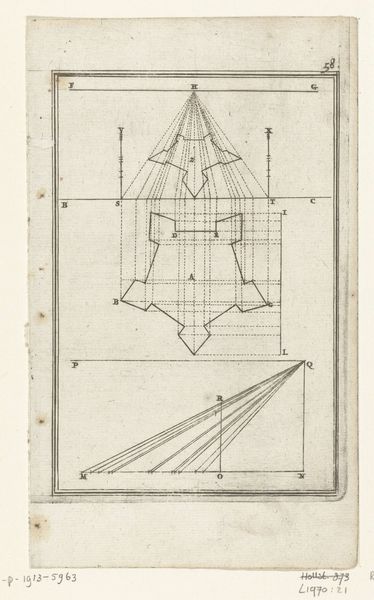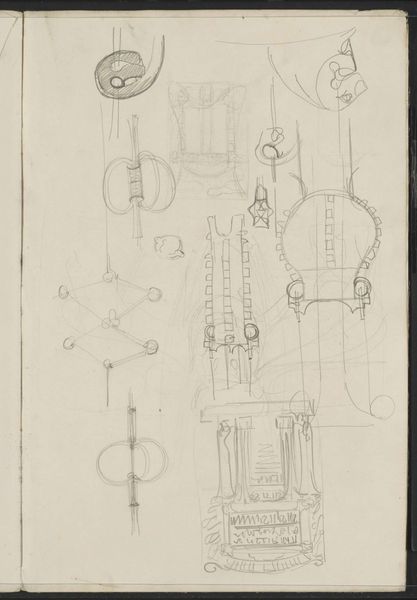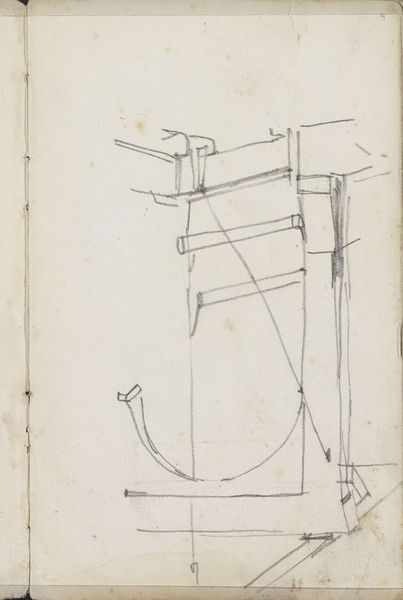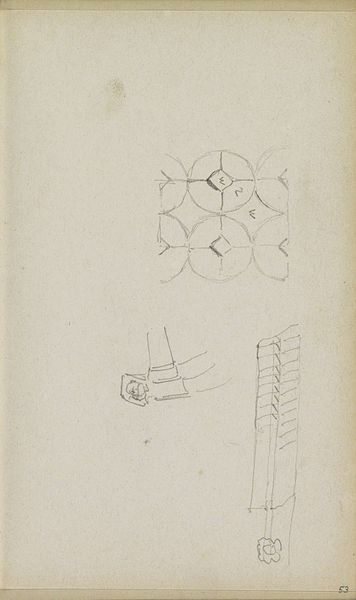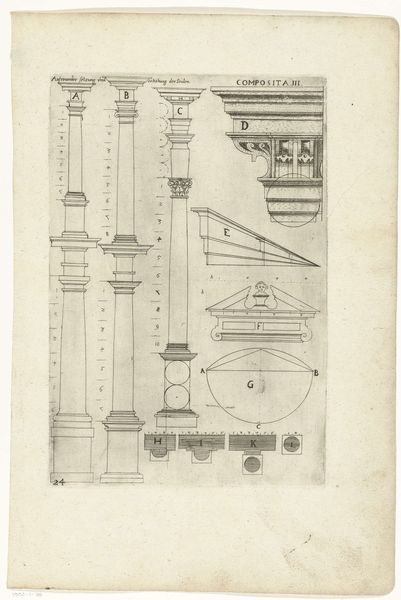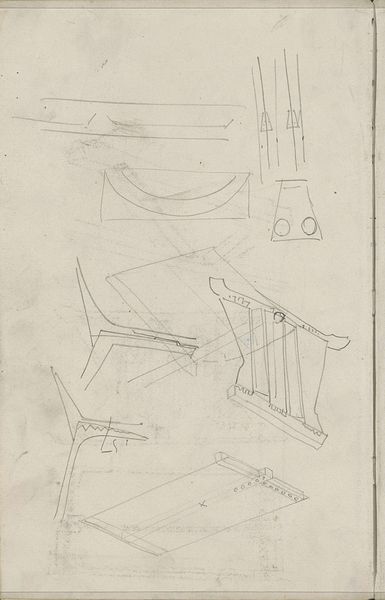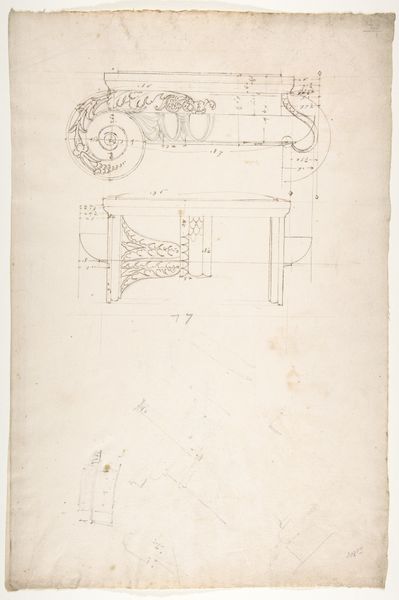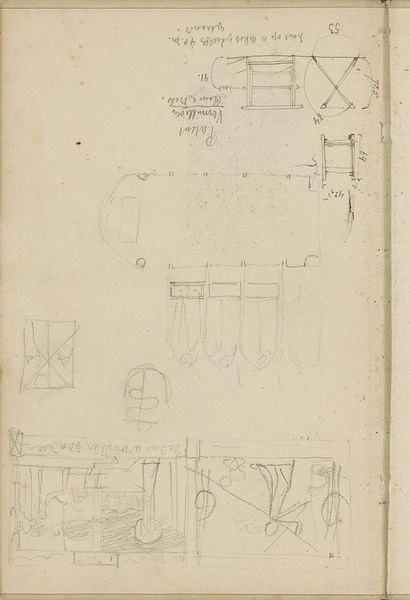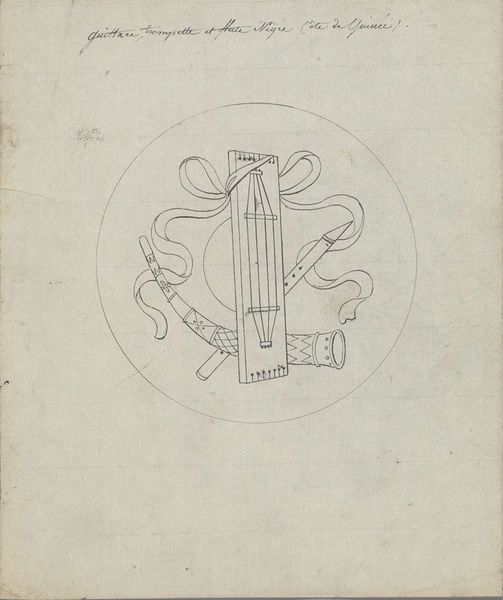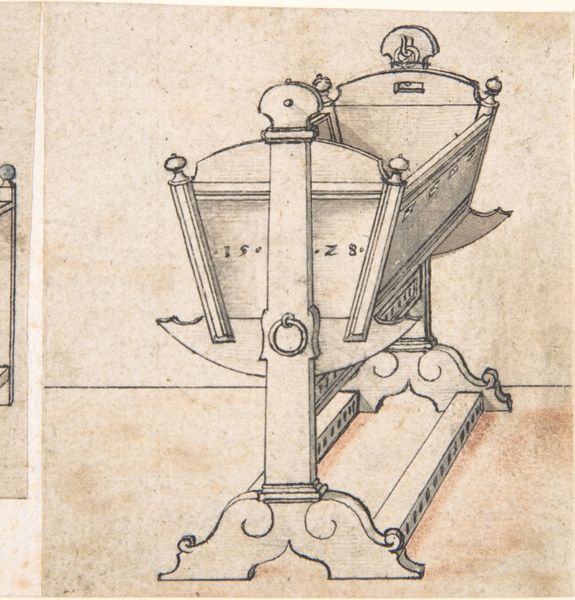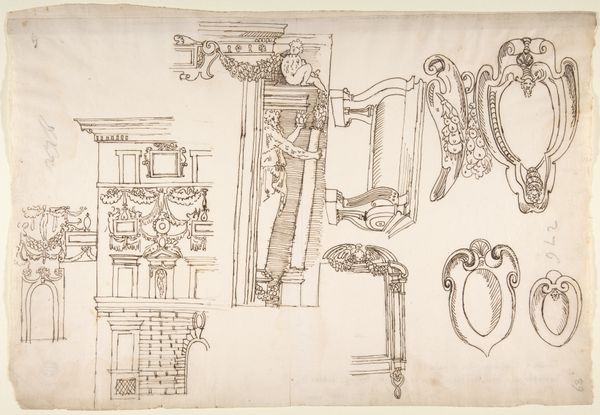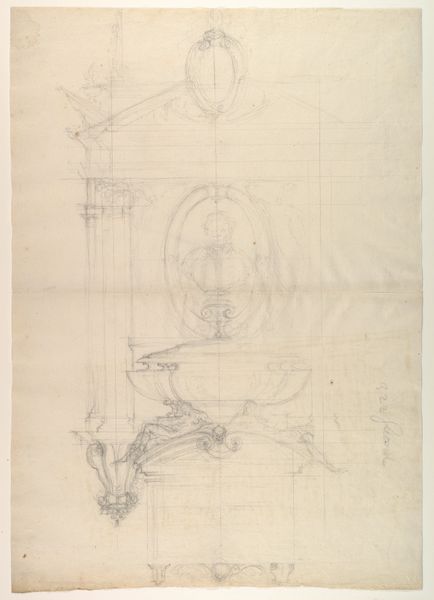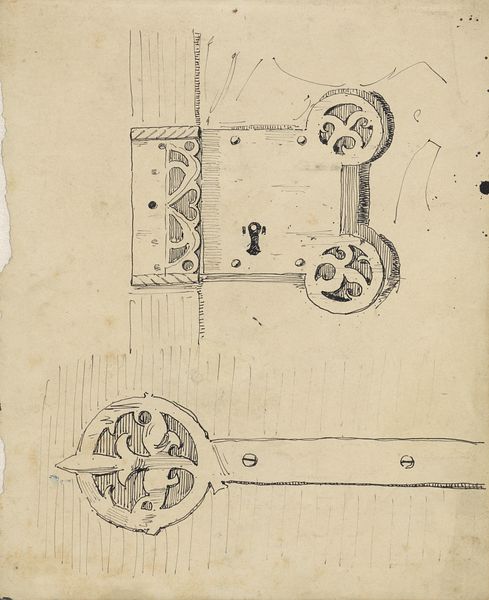
drawing, pencil
#
drawing
#
arts-&-crafts-movement
#
furniture
#
geometric
#
pencil
Copyright: Rijks Museum: Open Domain
Editor: This is a pencil drawing titled "Ontwerp voor een tafel," or "Design for a Table," created around 1895 by Carel Adolph Lion Cachet. It’s a preliminary sketch, quite geometric. What historical narratives do you think it speaks to? Curator: The sketch immediately brings to mind the Arts and Crafts movement. What seems, on the surface, to be a simple furniture design resonates with deeper, more socially conscious questions about labor and industrialization during the late 19th century. Do you notice any design choices that speak to that movement? Editor: I see that there's a focus on visible structure and possibly hand-crafted ornamentation rather than machine-made perfection. The details don't look easily replicable by a machine. Curator: Precisely. The Arts and Crafts movement championed handcrafted objects as a response to the perceived dehumanizing effects of industrial production. They valued individual artistry and sought to bring art into everyday life. How might this design relate to concerns around class and access to beauty? Editor: It suggests a potential democratization of art. If even functional objects are beautifully designed and made, it elevates the experience of ordinary people. However, hand-crafting is typically expensive. How did designers confront these issues? Curator: Absolutely, you’re getting at the central tension of the movement: the ideal of accessible art versus the reality of its economic limitations. Movements such as the Arts and Crafts also critiqued the aesthetic values of mass-produced goods, especially regarding furniture design, for their lack of character and authenticity. Is the creation of such a beautiful, complex table inherently radical in that cultural context? Editor: It pushes against mass production but risks exclusivity. Still, it speaks volumes about the values Cachet prioritized. Thanks, I never thought about furniture having such socio-political implications. Curator: These connections are easily overlooked! I am always eager to see what everyday things might expose the power dynamics operating just below the surface of what seems "normal".
Comments
No comments
Be the first to comment and join the conversation on the ultimate creative platform.
